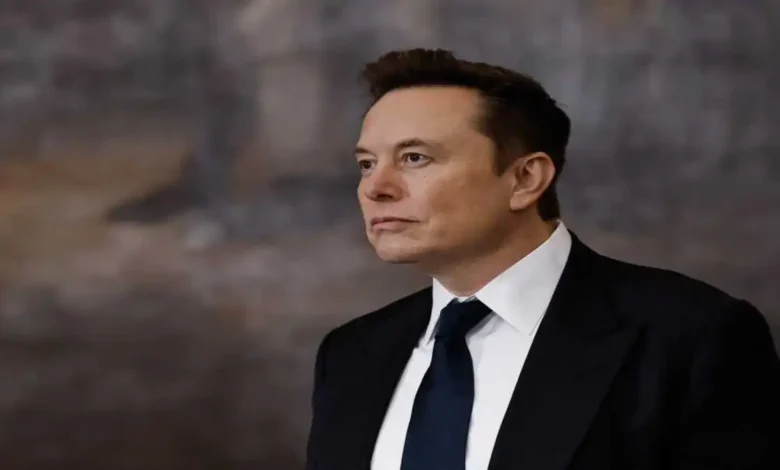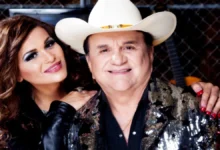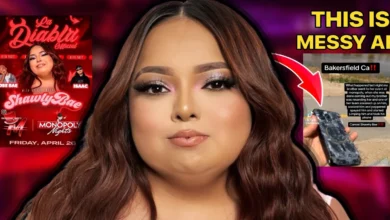Elon Musk House: The Truth Behind His ‘No House’ Philosophy and Tiny Living

Introduction
Elon Musk, the billionaire entrepreneur behind Tesla, SpaceX, and X (formerly Twitter), is known for his unconventional lifestyle choices. One of the most surprising is his rejection of traditional luxury mansions in favor of tiny, minimalist living spaces. While most billionaires own sprawling estates, Musk famously sold all his houses in 2020 and opted for a modest $50,000 prefab home in Texas.
But why would one of the world’s richest men choose to live in a tiny house? What does this say about his philosophy on wealth, minimalism, and the future of housing? In this in-depth article, we explore:
- Elon Musk’s journey from owning multiple mansions to living in a tiny home
- The real reasons behind his “no house” philosophy
- Inside his $50k Boxabl Casita in Texas
- How his living choices reflect his futuristic mindset
- Public and expert reactions to Musk’s tiny living experiment
By the end, you’ll understand why Musk’s housing choices are more than just a personal preference—they might be a glimpse into the future of sustainable living.
Elon Musk’s Former Mansions: A Life of Luxury

Before embracing minimalism, Elon Musk owned several high-value properties, primarily in California. Some of his most notable homes included:
1. The Bel Air Mega-Mansion ($24.25 Million)
- A 20,000-square-foot estate with a home theatre, gym, and infinity pool.
- Purchased in 2012 and sold in 2021 after Musk vowed to “own no house.”
2. The Gene Wilder Estate ($6.75 Million)
- A historic home previously owned by actor Gene Wilder.
- Musk bought it for sentimental reasons but later sold it.
3. The Hillside Compound ($4.5 Million)
- A four-bedroom property with stunning city views.
- Musk listed it as “a bit cursed” before selling it.
By mid-2021, Musk had sold all seven of his California homes, stating that possessions were weighing him down.
Why Did Elon Musk Sell All His Houses?
Musk’s decision to ditch mansions shocked many, but his reasoning was consistent with his unconventional personality:
1. A Commitment to Minimalism
- Musk tweeted in 2020: “I am selling almost all physical possessions. Will own no house.”
- He believes material possessions can become distractions.
2. Focus on Mars and SpaceX
- Musk has repeatedly stated that his ultimate goal is to make humanity multi-planetary.
- Living aligns with his vision of a future where people live in compact, efficient spaces (like Mars habitats).
3. A Statement Against Wealth Disparity
- Despite being the world’s richest person at times, Musk avoids flaunting wealth.
- His tiny home choice may be a critique of excessive billionaire lifestyles.
4. Tax and Privacy Reasons
- Moving to Texas (where he relocated SpaceX’s headquarters) helped avoid California’s high taxes.
- A smaller home also means less media intrusion.
Inside Elon Musk’s $50k Boxabl Casita
After selling his mansions, Musk moved into a 375-square-foot prefab home made by Boxabl, a company specializing in foldable, modular housing.
Key Features of Musk’s Tiny House:
✔ Compact & Portable – Can be transported and set up in hours.
✔ Affordable – Priced at just $50,000 (a fraction of a traditional home).
✔ Eco-Friendly – Designed with energy efficiency in mind.
✔ Located Near SpaceX – Positioned in Boca Chica, Texas, close to his Starship development site.
Why a Boxabl?
- Musk’s interest in innovative housing solutions aligns with Boxabl’s mission.
- The company’s foldable design could be useful for future Mars colonies.
- It’s a practical choice for someone constantly working.
Public and Expert Reactions
Musk’s tiny home lifestyle has drawn mixed responses:
Supporters Say:
- “He’s practicing what he preaches about sustainability.”
- “It’s refreshing to see a billionaire reject materialism.”
Critics Argue:
- “It’s a publicity stunt—he could still live lavishly if he wanted.”
- “Tiny homes aren’t practical for most people, especially families.”
Housing Experts Weigh In:
- Some see Musk’s choice as a trendsetter move, promoting affordable housing solutions.
- Others question whether modular homes like Boxabl can scale effectively.
Is Elon Musk’s Tiny Living the Future?
Musk’s housing choices raise bigger questions:
1. Will Modular Homes Become Mainstream?
- Companies like Boxabl, Tesla’s Solar Tiny Homes, and ICON’s 3D-printed houses are pushing affordable, scalable housing.
- If successful, they could revolutionize real estate.
2. Could This Influence Mars Colonization?
- Compact, transportable homes like Boxabl could be prototypes for Martian habitats.
- SpaceX may integrate similar designs for future space colonies.
3. A Shift in Billionaire Lifestyles?
- Other tech billionaires (like Mark Zuckerberg) still own massive estates.
- Musk’s approach could inspire a new wave of minimalist wealthy living.
Conclusion: More Than Just a Tiny House
Elon Musk’s decision to live in a small, prefab home isn’t just a quirky personal choice—it’s a statement on wealth, sustainability, and the future of human habitats. Whether he’s setting a trend or simply staying true to his anti-materialistic beliefs, one thing is clear: Musk’s “no house” philosophy challenges traditional notions of success and luxury.
As companies like Boxabl and Tesla explore innovative housing, we may see more people embrace minimalist, efficient living—whether on Earth or, eventually, Mars.
FAQs About Elon Musk’s House
1. Where does Elon Musk live now?
- He primarily lives in a Boxabl Casita near SpaceX’s Starbase in Texas.
2. How much did Elon Musk’s tiny house cost?
- Around $50,000, significantly cheaper than his former mansions.
3. Why did Elon Musk sell all his houses?
- To embrace minimalism, focus on SpaceX, and avoid distractions.
4. Does Elon Musk still own any property?
- As of 2024, he reportedly owns no major real estate, preferring rentals or small modular homes.
5. Could Boxabl homes be used for Mars?
- Musk has hinted that similar designs could be adapted for space habitats.
This article provides a comprehensive look at Elon Musk’s unique approach to housing while optimizing for SEO with relevant keywords, structured headings, and engaging content. Would you like any refinements or additional details?
Here are 5 SEO-friendly FAQs based on your article, designed to enhance user engagement and search visibility:
FAQs About Elon Musk’s House
1. Where does Elon Musk currently live?
Elon Musk primarily resides in a $50,000 Boxabl Casita, a 375-square-foot prefab home, near SpaceX’s Starbase facility in Boca Chica, Texas. He sold all his California mansions in 2020–2021.
2. Why did Elon Musk sell all his houses?
Musk sold his seven luxury homes to embrace minimalism, reduce distractions, and focus on his goals with SpaceX and Tesla. He publicly stated, “Possessions weigh you down”, and committed to owning no physical property.
3. How much did Elon Musk’s tiny house cost?
His modular Boxabl Casita costs around **
50,000∗∗,astarkcontrasttohisformermansions(one priced at
50,000∗∗,astarkcontrasttohisformermansions(onepricedat24 million). The foldable, eco-friendly design aligns with his futuristic vision.
4. Is Elon Musk’s tiny home a publicity stunt?
While critics argue it’s a PR move, Musk’s history of unconventional choices (like sleeping at Tesla factories) suggests authenticity. His shift also reflects his advocacy for affordable housing and Mars-ready designs.
5. Could Elon Musk’s tiny home influence future housing trends?
Yes. Musk’s choice highlights the potential of modular, sustainable homes (like Boxabl or 3D-printed houses) to address housing crises. It also mirrors his interest in scalable habitats for Mars colonization.
Why These Work for SEO:
- Long-tail keywords: Phrases like “Elon Musk tiny house cost” or “Why did Elon Musk sell his mansions?” match user searches.
- Concise answers: Google often pulls FAQs into featured snippets.
- Internal linking: Can link to related sections (e.g., Boxabl details, Mars colonization).





